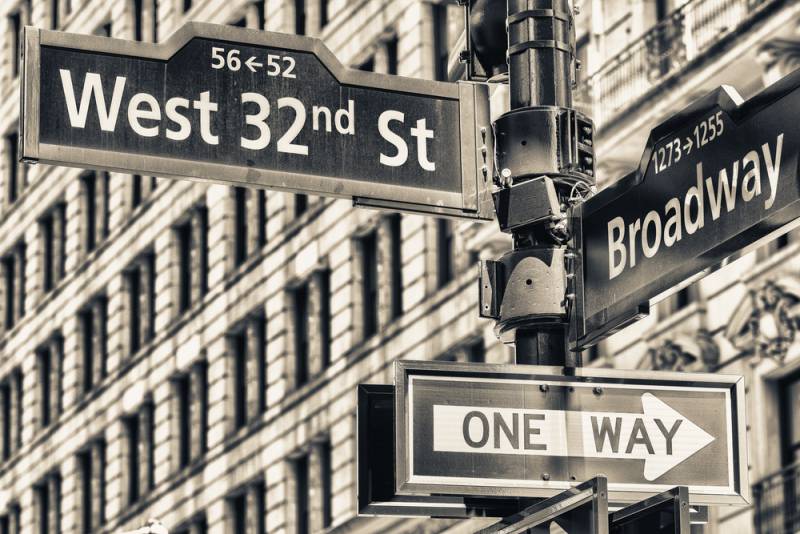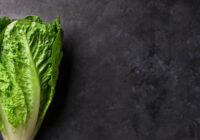Cities are the ultimate space-savers.
Once you own chickens, everything starts to look different. When I happen upon a picture of Guantanamo Bay, for instance, I can’t help but see the gleaming barbed wire-enclosed prisonscape as the ultimate man-sized coop.
It’s the tops in terms of security: No unwelcome visitors are getting through, over or under, and none of the inhabitants are making a break for it. But if those men were hens, the yolks of their eggs would certainly lack luster. The shells would be thin and the yolks flaccid, since they’ve got no access to grass or trees or nature of any sort.
Certain people, too, you begin to stereotype because they’ve got an assemblage of traits that resemble a chicken breed. There’s the slender, flighty, high-drama variety; when a friend like this goes a little cuckoo, you pat her on the back and let it pass. Then there’s the easy-going, adaptable sort with a hearty appetite and motherly hips. It’s worth paying attention to a squawk from these trusty types.
Night in Manhattan
Sometimes this filter turns on while I’m in Manhattan. It tends to happen around 4 am, when I, along with most of the city’s 1.6 million denizens, have gone to roost in cubes stacked atop one another. If Manhattanites were hens, we would make up a not-unusually large sized factory farm flock. Here we rest, taking in oxygen and emitting carbon dioxide, maybe getting up to pee or to open the fridge for a peck, until dawn comes and brings with it the taxis and sirens that are our rooster’s crow.
I have chickens on my mind on my nights in the city because they’re what bring me here. On Mondays after work I deliver eggs—between 27 dozen and 50 dozen, depending on the time of year—from our farmstead to a catering company downtown. My toddler comes along, and she and I sleep over at our pied-à-terre on Central Park West, also known as my aunt’s apartment. On girls’ night, I don’t know if it’s because we’re not home, or because of the time spent in the car, but my daughter sometimes has trouble sleeping. That’s why 4 am finds me humming songs and staring far out the window at a chimera that is part dream.
The details erased by night, I see a lake of darkness that will reveal itself, come dawn, to be the pasture of all pastures: Central Park. It is surrounded by outlines of buildings that look like a simplified city drawn by a kindergartner.
What a fantastical sort of farm. A mega-flock by day, we the birds break off into smaller flocks at night, each flock going to roost in one of thousands of high-rise dwellings. Day brings us back together, stretching our wings and picnicking in a shared green space. It is the marriage of what is best about a high-occupancy industrial farm and a free-range farm where hens have the run of the place. Imagine chickens who spend their nights in rows of confining wire cages being able to take an elevator down to scratch for bugs in the morning. That’s us.
Granted, Central Park West is not your typical street. Most of the city is more concrete-and-brick than this grandest of New York’s streetscapes. Still, what I see out the window is an example of what a farm or metropolis can aspire to do: stack and squeeze occupants without making them feel stacked or squeezed.
City Necessities
It’s necessary. Just as the bucolic picture of ten hens on an acre will feed a family but not the world, country living is nice for us but couldn’t house the Earth’s population of 7.3 billion. There’s about an acre of arable land per person on Earth right now, a number that’s shrinking. So our family of soon-to-be-four taking up seven acres means that others must live on less than their acre. Cities are the ultimate space-savers. It is cities that allow the existence of the farms that feed them.
People are drawn to the city for personal reasons—the culture, the walkability, the energy, the availability of any kind of food at any hour, the jobs—not because they feel called to scrimp and save on acreage (or heating fuel or plumbing pipe, for that matter). Especially in Manhattan, anyone who can afford an apartment here could also score a nice spread in the country. People congregate here willingly, and thank goodness for that. Thanks to the million who choose to live like this, I don’t have to.
I did for about five years. I lived in a shoebox with two roommates and our various significant others in the East Village until I couldn’t anymore. My breaking point came around the time I got doored on my bike, and I stood there crying and holding my bleeding hand and not one of the pedestrians passing by stopped to ask if I was OK. That was shortly after one of my roommates came home on a hot summer night with a hook-up and stepped over me as I was sleeping, yanked my fan out of the wall and dragged its cord across my face so that she could use it. I was done.
But I like living near the city, and I feel a sense of pride in being one of the farmers whose job it is to feed all these beautiful, ambitious, ruthless people.
Cities are the ultimate space-savers. It is cities that allow the existence of the farms that feed them.
We’re at the point where we’ve got no choice but to squeeze and stack. To do it in a way that honors the living things you are squeezing and stacking, whether they’re investment bankers or hens: that is the goal. On that front, Manhattan is so impressive.
Squeezing and Stacking
But there’s another side to all this squeezing and stacking, which is harder to remember because, unless you happen to be a farmer or garbage man, most of us don’t have to deal with it. From this window overlooking the park, I won’t see shit running in the streets, or smell a lagoon full of excrement like the ones that plague the neighbors of a factory farm.
We only get a glimpse of the crap—trash and excrement both—that this shining city creates when Mother Nature puts our nose in it. When it rains, if you happen to be out on the water or walking the shore, you might see storm drains spewing raw sewage into the Hudson or East or Harlem River. When it snows, and garbage trucks can’t get through, the city’s sidewalks turn into rat-infested garbage heaps in a day or two.
When all systems are go, though, and anything at all, legal or otherwise, shows up at your apartment door within hours of a mouse click or phone call, it’s hard to focus on the reality behind the curtain. Who has the bandwidth, while plugged into her phone and grabbing take-out, to realize that she is eating food that must be grown elsewhere and, more problematically, generating garbage and shit that must go elsewhere?
What Happens Downstream
No, we don’t do too much thinking about what happens downstream. If Manhattan were a farm, it definitely would not be the type that has jumped on the beyond-organic bandwagon. We’re way behind other cities in terms of dealing with our number two. Remember when Michael Bloomberg stopped recycling for a while to save money? We’re years late to the composting party, and while I hear tell of it happening in the boroughs, in my idyllic pied-a-terre, orange rinds still go in the trash. A New York judge just overturned a city-wide ban on Styrofoam, calling it arbitrary, capricious and irrational. Meanwhile, California grocery stores have stopped stocking plastic bags and now charge 10 cents for paper, and San Francisco is en route to becoming a zero-waste city by 2020.
Like a typical New Yorker—particularly one with this view—I am not thinking about that dark side as I gaze out the window. The 4 am turns into 5 am, but the clock brings none of the anxiety that sometimes comes with being up in the middle of the night. Instead, I feel warmly drowsy, close not only to the child nodding in my arms, but to the kindred souls sleeping above and below me. Who knows? They might be people I’ve fed. I think as I hum how we fit in here, in a way I seldom felt I did during the years I lived in the city. We are only occasional inhabitants, but we are Manhattanites too.
Not until morning will the less palatable side of city living reassert itself. I will pack up my backpack and my daughter and I will walk along the park back to our car, and it will be stinky, full of the food scraps that I took last night from the catering company. We feed these odds and ends—broccoli stems, stale bread, cheese rinds, soggy tomatoes—to our chickens and goats, and they go nuts for the stuff. These are top of the line organic scraps, and they cut down on feed costs and all that: the virtuous cycle.
Sure it seems wasteful not to load the car up, max it out, but why should that be our problem? Why should we have to sit here for an hour and a half in a tiny Honda Fit full of other people’s garbage? It isn’t our waste. We don’t make any food waste at home: Anything that doesn’t go to chickens goes into the compost.
But I couldn’t bring myself to leave the loading dock empty-handed. I got an air freshener instead. It feels like my job. Being a farmer means not just feeding your flock, but mucking the coop. So on Tuesday mornings, I buckle my daughter in right next to a bin of scraps, roll down the windows as she screeches “pee-yew!” and feel a kinship with India’s untouchables as we drive past nannies escorting uniformed children to school. It’s four or five garbage bags we’re hauling—maybe a hundred pounds of food. Nothing in the big picture, and yet farming is made up of small, humble tasks.
It’s good for us. We are too coddled a flock.
The views expressed in this article are the author’s own and do not necessarily reflect Fair Observer’s editorial policy.
Photo Credit: Nikkytok / IM_photo / Pisaphotography / Shutterstock.com
 We bring you perspectives from around the world. Help us to inform and educate. Your donation is tax-deductible. Join over 400 people to become a donor or you could choose to be a sponsor.
We bring you perspectives from around the world. Help us to inform and educate. Your donation is tax-deductible. Join over 400 people to become a donor or you could choose to be a sponsor.
Support Fair Observer
We rely on your support for our independence, diversity and quality.
For more than 10 years, Fair Observer has been free, fair and independent. No billionaire owns us, no advertisers control us. We are a reader-supported nonprofit. Unlike many other publications, we keep our content free for readers regardless of where they live or whether they can afford to pay. We have no paywalls and no ads.
In the post-truth era of fake news, echo chambers and filter bubbles, we publish a plurality of perspectives from around the world. Anyone can publish with us, but everyone goes through a rigorous editorial process. So, you get fact-checked, well-reasoned content instead of noise.
We publish 2,500+ voices from 90+ countries. We also conduct education and training programs
on subjects ranging from digital media and journalism to writing and critical thinking. This
doesn’t come cheap. Servers, editors, trainers and web developers cost
money.
Please consider supporting us on a regular basis as a recurring donor or a
sustaining member.
Will you support FO’s journalism?
We rely on your support for our independence, diversity and quality.








